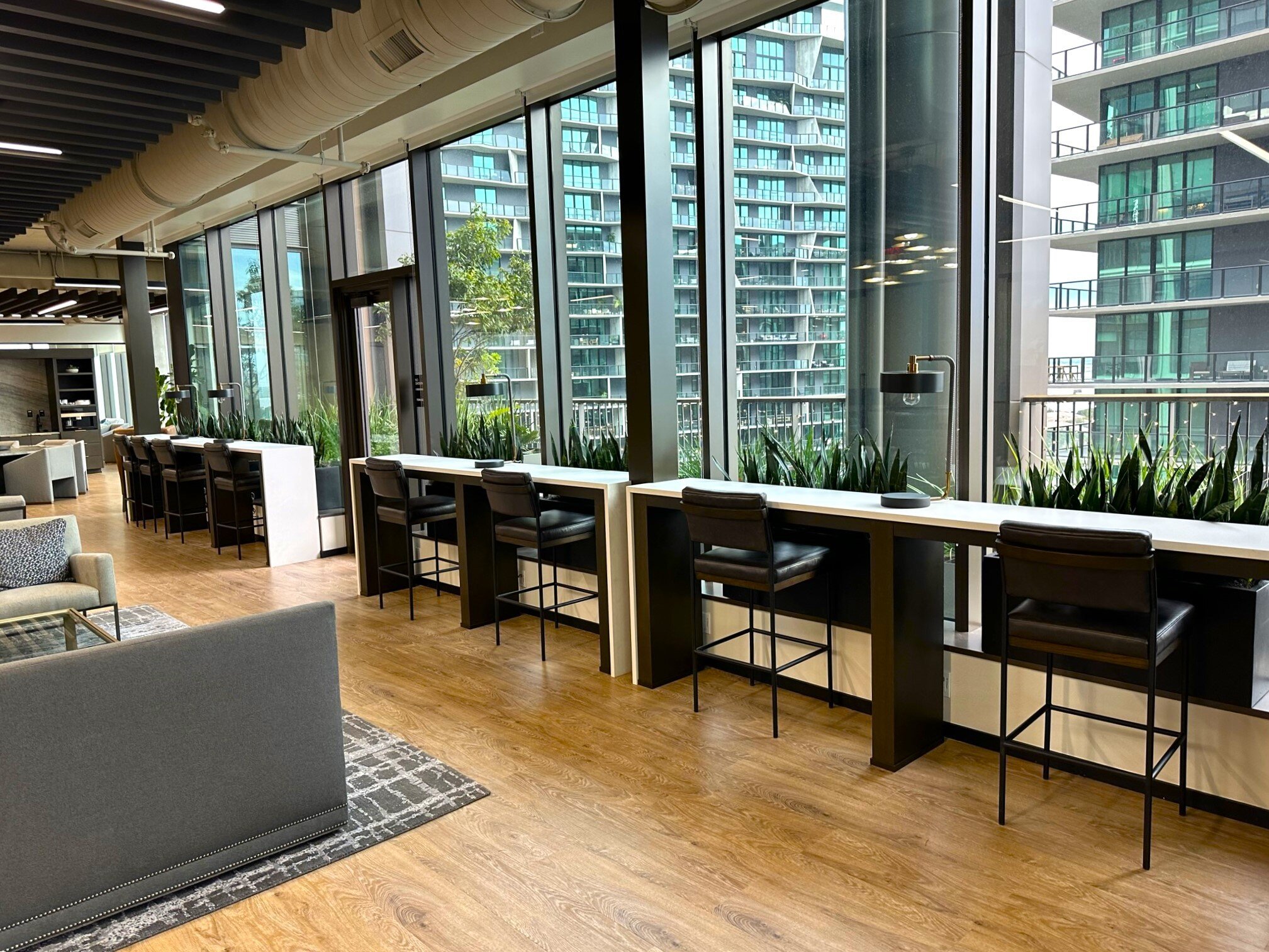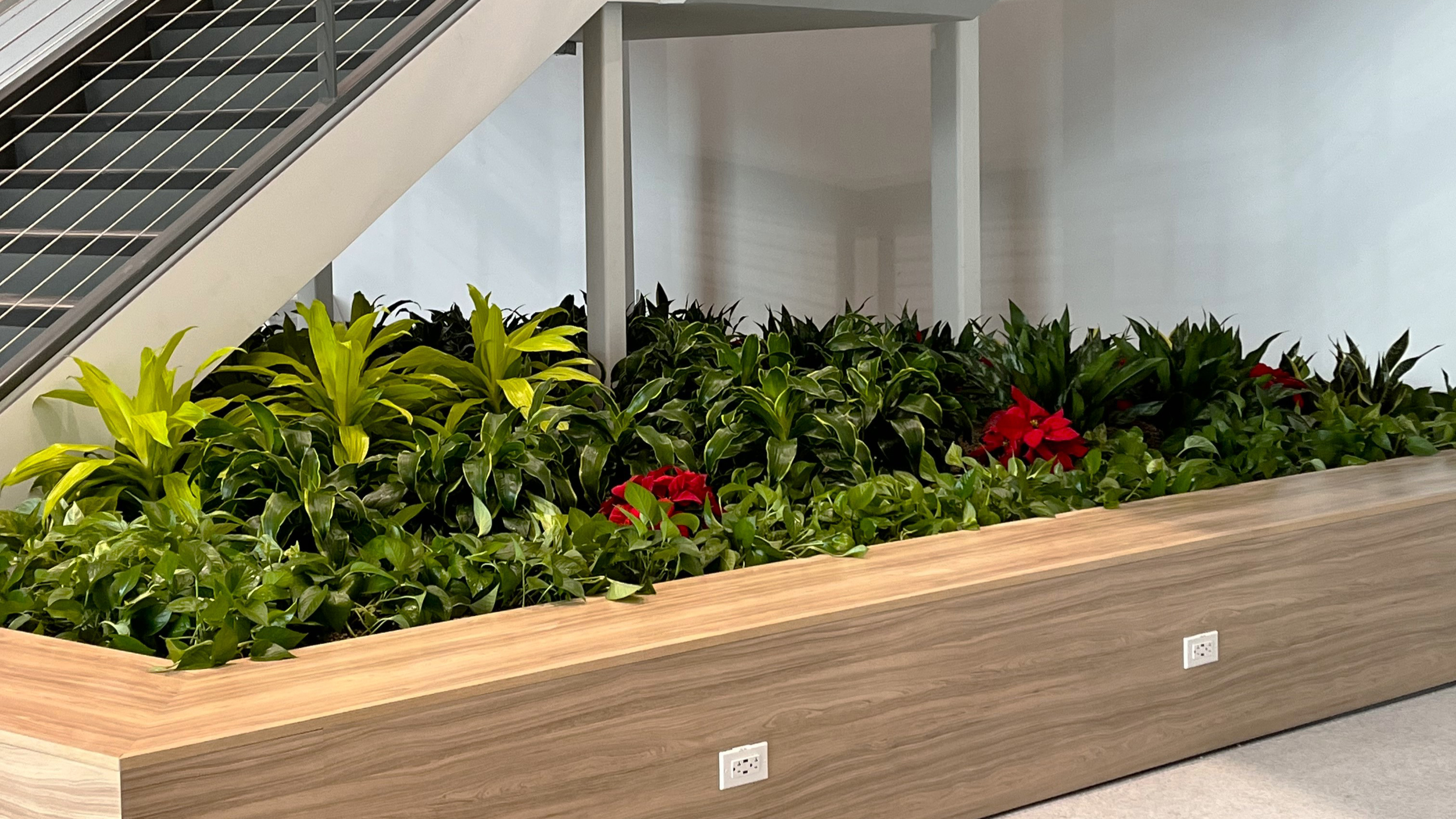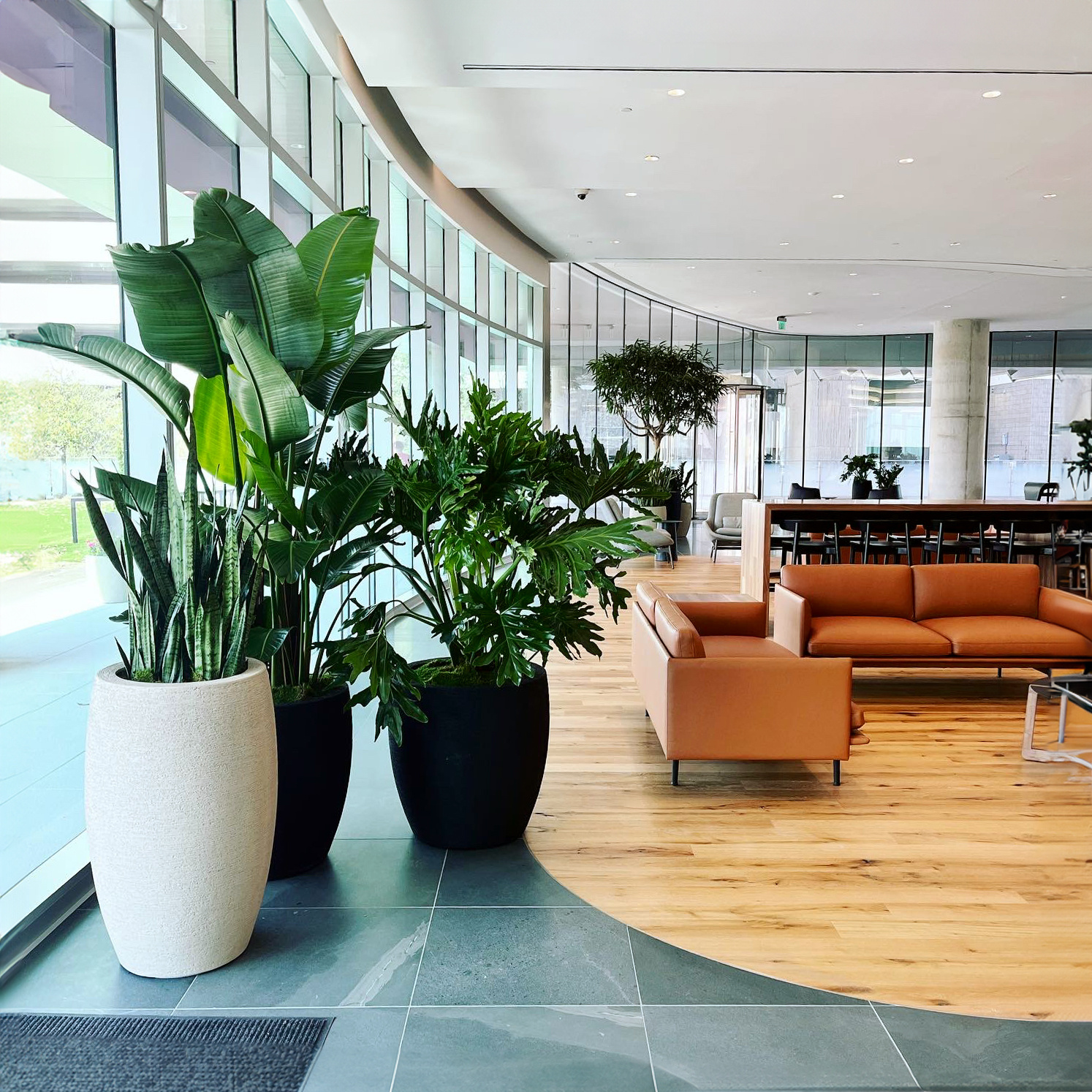Boost Your Corporate Rental Rates with Biophilic Design
If you’re an office manager, prioritizing workplace wellness, especially in communal spaces, can help you attract quality tenants, charge higher rental rates and, ultimately, ensure maximum profitability in the long term. Here’s how:

When it comes to corporate real estate, office tenants are looking for more than just a functional workspace to serve as their HQ. If your real estate provides shared spaces that are both functional and speak to humans’ innate need for community and socialization, then you’re right on the money, and could be charging more per square foot of your property.
In the modern workplace, communal areas are more than just transitional spaces. Lounges, hallways, and lobbies have the potential to foster a sense of community, which is the x-factor that tenants are looking for in post-pandemic environments. Businesses want spaces that can nurture a positive workplace culture and will get people excited about their jobs and the companies they work for.
With this in mind, landlords and real estate owners who are investing in trendy, comfortable, and inviting central spaces like lobbies, lounges, and break rooms will reap the financial rewards of meeting the market’s needs.
Upgrading communal areas will:
- Increase tenant satisfaction by encouraging employees to stay in a space that supports their health, wellness, and productivity.
- Justify higher rental rates by providing communal areas that are eco-conscious, people-focused, and represent sustainable workspaces.
Tenants will pay more for spaces that encourage workplace wellbeing. Expertly designed and strategically thought-out central spaces cultivate positive and healthy working environments. They encourage people to talk, share ideas, and collaborate with one another.
Communal areas can also serve as neutral zones that put employees on an even keel. This invites socialization outside of the more stringent working environment, which can be good for morale. But, if you’re looking to redesign your real estate, what’s the best way to tackle the upgrade of these central spaces?
Incorporating Wellness Features
In alignment with Natura’s people-first approach to business, and our endeavor to work with companies who share our values, we are constantly on the lookout for ways to enhance the appeal of office spaces. Our primary role is to create environments where people thrive by leveraging the power of plants and their impact on the human psyche. We help clients bring the outside in using rich, verdant plantscapes that align with their brand and image.
As a proud WELL partner, we also draw on the basic tenets of the WELL Building Standard to transform and optimize office environments.
By incorporating features that promote wellness, sustainability, and eco-conscious modern amenities, office managers can increase the value of their properties and attract high-quality tenants.
Our work specifically aligns with WELL’s standards for mental wellness. This means we have the ability to advise clients on how plant life can positively impact the mental health of those who live or work in a building. We are experts in curating restorative spaces. Our power is in the seamless and strategic integration of greenery and natural elements in the workplace.
Key Considerations for an Optimized Communal Space
Aside from hiring a professional for the best in biophilic design, a lot goes into optimizing a communal area for workplace wellness. Consider, for instance:
- Natural Light: Many in-office employees complain that they never see sunlight, which can (understandably) impact the mood and productivity of occupants. A healthy influx of natural light is a crucial component of the WELL Building Standard, which favors large windows and skylights in all spaces.
- Sustainable Design: Sustainability is a powerful selling point for landlords, and a priority for office tenants. When reviving central spaces, consider using eco-friendly materials, energy-efficient lighting, and natural décor to highlight your building’s commitment to sustainability.
At Natura, we continue to find new ways to increase people’s access to nature, using our expertise to tackle their challenges head on. For instance, valued client Common Desk wanted to create a space that enticed individuals to their office. They aimed to cultivate a warm, welcoming, and comforting work environment which increased both the profitability of the company and its property.
A Like-Minded Partnership
Post Covid, the merits of in-person workspaces are becoming abundantly clear. Part of the appeal of a full-time return to the office is a significant improvement in interpersonal relationships, collaboration, engagement, and teamwork. It also encourages employers to foster workplace health and wellness and prioritize employee wellbeing, which is right up our alley.
As a company we prioritize people-centered environments, and we’re always on the lookout for effective strategies that can maximize a space’s potential. For instance, our primary focus, integrating plants and living things in a space, has the potential to boost workplace wellness by:
- absorbing noise
- reducing stress
- improving air quality
- combating sick building syndrome
And, while these benefits apply to private offices as well, what we do with biophilic design really speaks to the effective use of shared spaces. This aligns well with humans’ innate need for community and socialization. We believe in the power of centralized communal spaces. They serve as the perfect hubs for collaboration, relaxation, and social interaction, but only when they’re properly laid out. More than that, a well-designed communal area can be a competitive advantage for landlords by providing tangible value to their tenants.
Looking to boost your property’s value and optimize central space with the power of biophilic design? Request a consultation with a Natura design consultant today.
Integrating plant life into your office space gives you a major return on investment. Give us a test run and calculate your potential returns with our ROI calculator.




